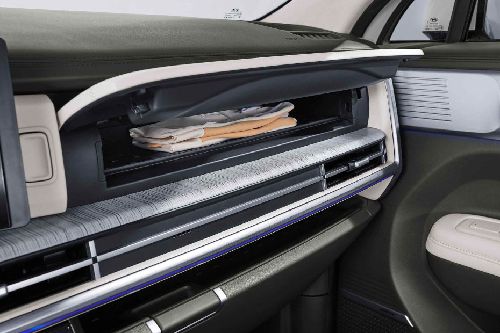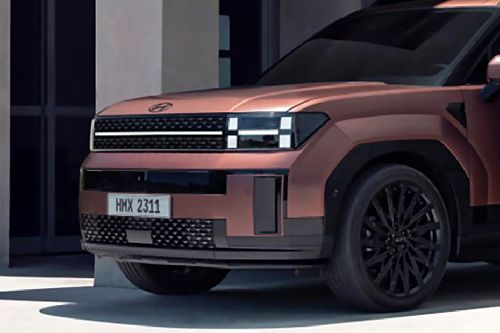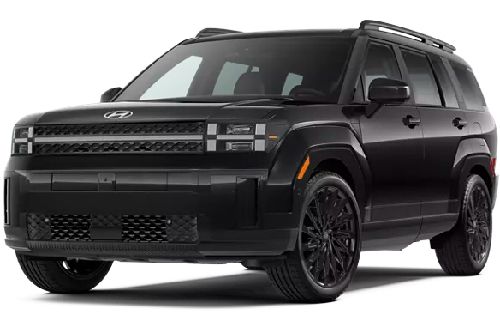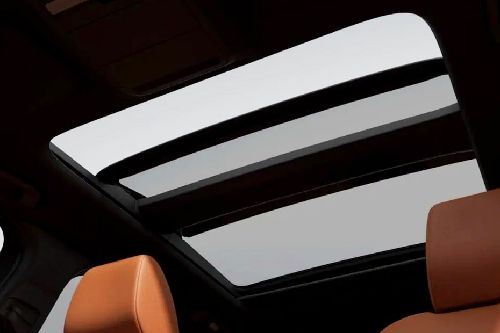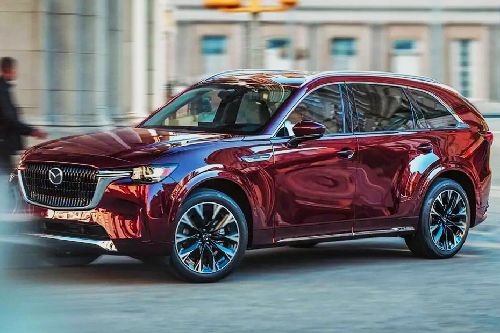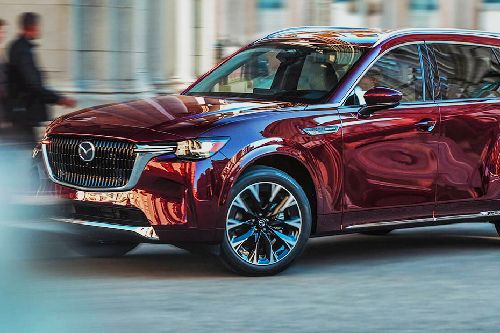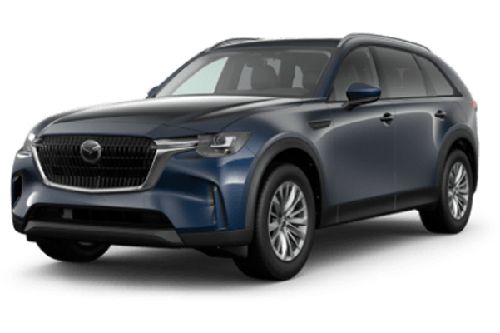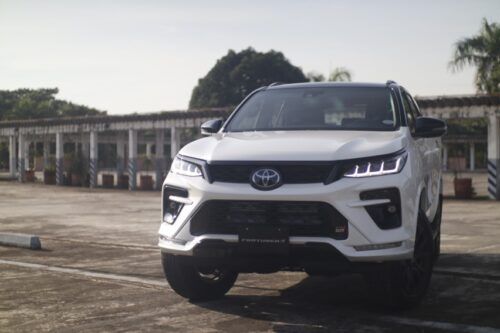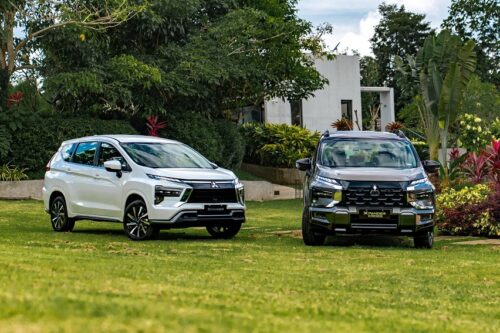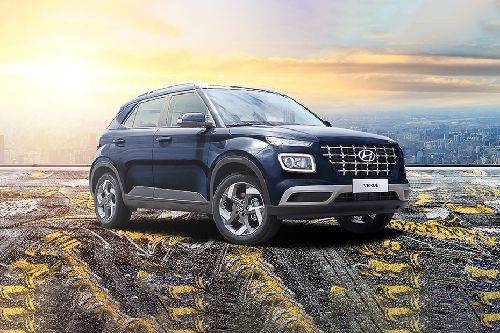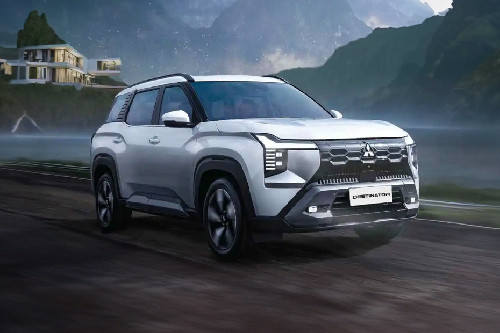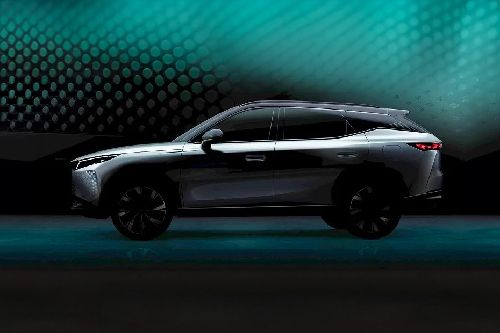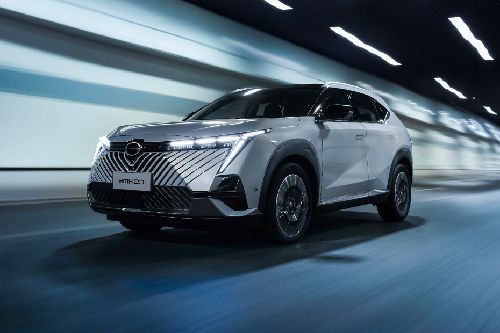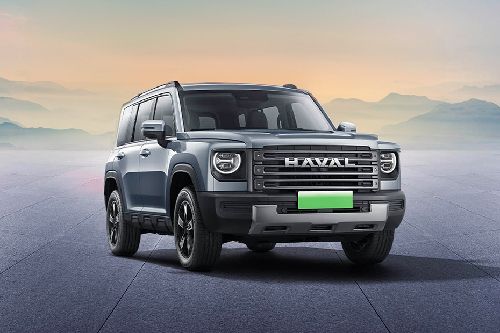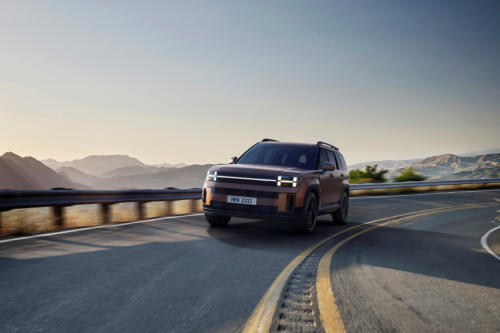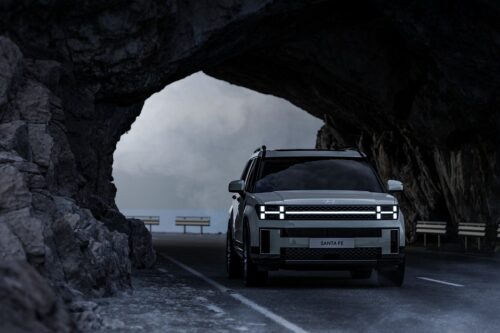3-row hybrid SUV tussle: Hyundai Santa Fe HEV vs. Mazda CX-90 HEV
Both are family-friendly rides with peppy electrified powertrains
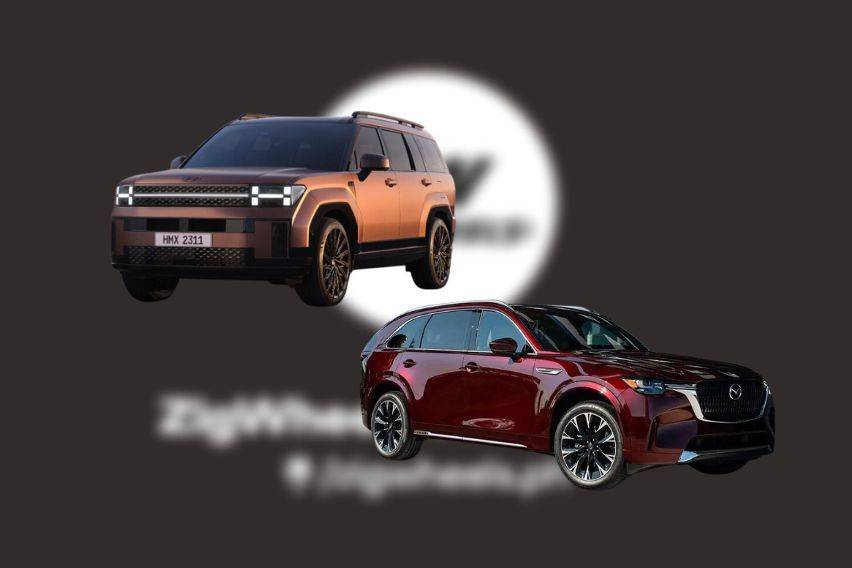
KEY TAKEAWAYS
What is the price range of the Hyundai Santa Fe in the Philippines?In the Philippines, the Hyundai Santa Fe’s price ranges from P2.41 million to P3.33 million
In the Philippines, the Hyundai Santa Fe’s price ranges from P2.41 million to P3.33 million.What are the variants of the Mazda CX-90 in the Philippines?
The Mazda CX-90’s variants in the Philippines are the HEV Turbo Exclusive and the HEV Turbo.The entry of the Hyundai Santa Fe Hybrid Electric Vehicle (HEV) to the market is a huge boon for buyers looking to get a mid-size, family-friendly ride.
Per Hyundai Motor Philippines, the all-new model features a plush interior, fuel-efficient hybrid performance, and a wealth of advanced driver-assist systems (ADAS).
But how does it compare to the Mazda CX-90 HEV Turbo Exclusive, another three-row crossover model Let’s look at this specs comparison to find out.
Tale of the tape
Size-wise, the all-new Santa Fe HEV is 4,830-millimeters (mm) long, 1,900-mm wide, and 1,780-mm in height. It also has a wheelbase length of 2,815-mm.
The CX-90 Exclusive, meanwhile, is 5,120-mm long, 1,994-mm wide, and 1,745-mm in height. Its wheelbase spans 3,120-mm.
As a side note, the CX-90 HEV is a full-size model that is markedly larger than the mid-sized Santa Fe HEV. Regardless, it is priced somewhat closely to the electrified Hyundai model, and it is the only hybrid three-row trim in Mazda’s locally available lineup. As such, the two models may overlap in the eyes of consumers.
Leaving the segment disparity aside, the CX-90 HEV’s larger dimensions might result in more legroom and elbowroom. Otherwise, the Santa Fe HEV’s more compact form factor means it can fit more easily in more types of parking spaces.
Exterior
On the outside, both vehicles each come with their own distinctive design directions. The Hyundai gets a boxier, more imposing look, while the Mazda gets a slick and elegant appearance.
 Photo from Hyundai Motor Philippines
Photo from Hyundai Motor PhilippinesBoth, however, are fitted with full LED exterior lighting, power-folding side mirrors, roof rails, an electronic sunroof, a power tailgate, and a rear spoiler. The two vehicles also get rain-sensing wipers and automatic functionality for their LED headlamps.
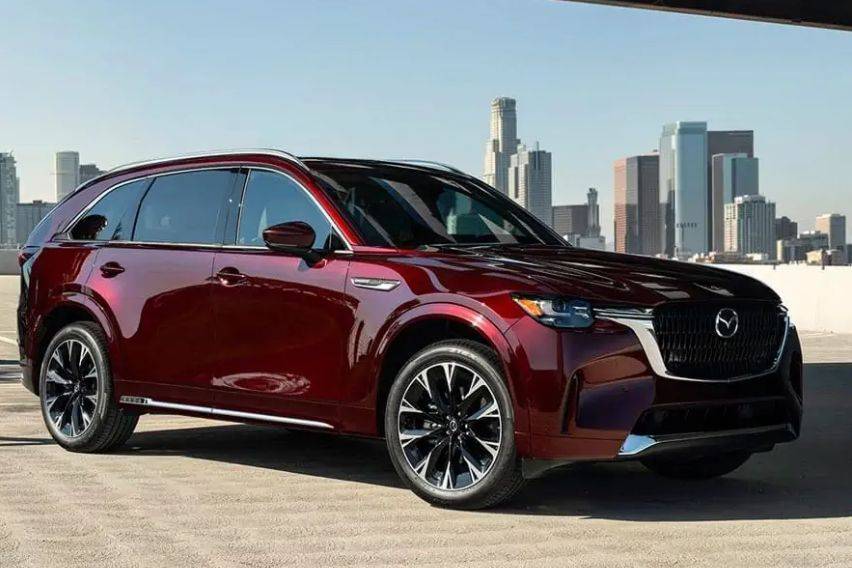 Photo from Mazda Philippines
Photo from Mazda PhilippinesCompleting the look of the Hyundai crossover is a set of 21-inch alloy wheels wrapped in 255/45 R20 tires. The Mazda model, meanwhile, rides on a set of 21-inch diamond-cut aluminum alloy wheels wrapped in 275/45 R21 tires.
Interior
Concerning interiors, the Santa Fe HEV sports a modern cockpit dominated by a panoramic display. It likewise features a wide open center console area, as well as a mostly straight and flat dashboard.
In contrast, the CX-90 HEV offers a more traditional-looking cockpit with a multi-tiered dash, a floating-type display, and a chunky center console.
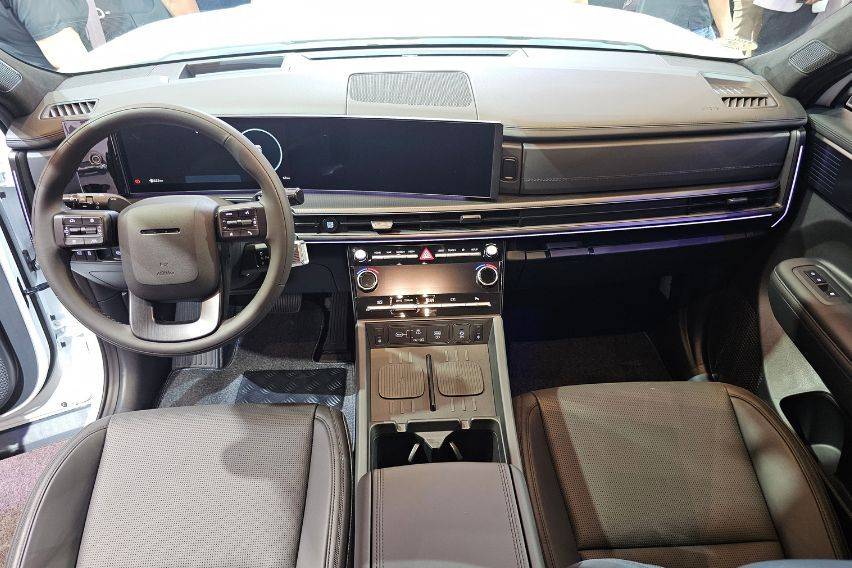 Photo from Cesar Guiderone Miguel
Photo from Cesar Guiderone MiguelFor both vehicles, however, most interior surfaces are clad in premium materials such as Nappa leather. Also common between the two rides are power-adjustable and ventilated driver’s seats, a leather-wrapped tilt and telescopic steering wheel, LED ambient lighting, a push-to-start button, and a front center armrest.
The two also get a three-row seating configuration, with electronically adjustable captain seats for the second row and a split-folding third row. The rearmost seat on the Hyundai, however, gets a 60:40 split, while the Mazda’s offers a 50:50 split.
Keeping the occupants of the Santa Fe and CX-90 HEV models cool is a dual-zone automatic climate control system with rear vents.
The Hyundai hybrid has unique features that are not present in the Mazda model, such as an ultra-violet sterilization feature, a fingerprint recognition system, and a bidirectional console box.
For on-board entertainment, the Santa Fe HEV uses a 12.3-inch infotainment system with wireless Apple CarPlay and Android Auto. It also gets a six-piece speaker system, and a dual wireless smartphone charging pad.
On the other hand, the CX-90 HEV uses a 12.3-inch central display, which also comes with wired Android Auto and wireless Apple CarPlay. Its 12-piece Bose sound system may also provide better sound quality, but it only gets one wireless smartphone charging pad.
 Photo from Mazda Philippines
Photo from Mazda PhilippinesFor the driver, the Hyundai hybrid unit offers a 12.3-inch digital gauge cluster. The Mazda, meanwhile, comes with a 12.3-inch digital meter set.
The aforementioned meter set is molded into the dashboard on the CX-90. The gauge cluster on the Hyundai instead sits on top of the dash to link together with the vehicle’s central infotainment screen.
The digital display setup on the Hyundai comes off as more modern-looking than the one on the CX-90. However, the Mazda does come with a windshield-projected heads-up display, which is not available on the Korean crossover.
Engine
The Hyundai Santa Fe HEV is propelled by a 1.6-liter turbocharged inline-4 gasoline mill paired with an electronic motor and a lithium-ion battery. At its most, it can produce up to 233 horsepower (hp) and 367 Newton-meters of torque. The Hyundai crossover's gear shifting is done via a six-speed automatic gearbox.
 Photo from Cesar Guiderone Miguel
Photo from Cesar Guiderone MiguelThe Mazda CX-90 HEV Exclusive, meanwhile, uses a 3.3-liter inline-6 mill paired with a 48-volt hybrid system with a 0.33-kilowatt-hour lithium-ion battery. At the most, the said powertrain can churn out 281 hp and 450 Nm of torque. For transmissions, it uses an eight-speed automatic.
Based on the figures above, the Mazda clearly has more oomph than the Hyundai hybrid. Its internal combustion component, after all, features a larger displacement and two more cylinders.
 Photo from Mazda Philippines
Photo from Mazda PhilippinesOther mechanical bits shared between the two include an all-wheel-drive system, four-wheel disc brakes, an electronic parking brake, and a multi-link rear suspension. The Mazda, however, uses a double-wishbone front suspension, while the Hyundai uses a MacPherson strut front end.
Only the CX-90 HEV comes with the i-Stop system, which actively saves fuel by shutting down its powertrain when the car stops. On the flip side, the Hyundai features a unique “baby mode,” which optimizes the car’s power delivery to provide extra comfort for young kids.
Safety
In terms of safety, both the Santa Fe HEV and the CX-90 offer what you’d expect from a modern crossover. The two have anti-lock braking, a 360-degree view camera, electronic stability control, hill-start assist, ISOFIX child seat anchors, and keyless entry, among others.
The two also get their own respective line of ADAS features. Both come with blind-spot monitoring, autonomous emergency braking, adaptive cruise control, and lane-keep assist.
However, Hyundai gets a manual speed limiter and a tire pressure monitoring system, both of which are absent in the Mazda model. On the other hand, the CX-90 gets a driver monitoring system which is unavailable on the Hyundai.
Variants, Price
Hyundai Santa Fe
- GLS 2WD: P2.41 million
- GLS AWD: P2.54 million
- Calligraphy AWD: P3.1 million
- Calligraphy HEV: P3.33 million
Mazda CX-90
- CX-90 Exclusive AWD Turbo: P3.68 million
- CX-90 Exclusive AWD HEV Turbo: P3.78 million
Verdict
In terms of power and size, the Mazda CX-90 clearly trumps the smaller Hyundai Santa Fe. The said fact is to be expected since it sits at a higher market segment. The aforementioned is also reflected by the Mazda model’s more expensive price tag.
 Photo from Cesar Guiderone Miguel
Photo from Cesar Guiderone MiguelThen again, the Hyundai model might have enough amenities and features to become a respectable match against the Mazda. As mentioned above, it gets a comparable array of tech and safety features and a similar three-row configuration as well. Buyers get all of the aforementioned bits in a package that is P350,000 cheaper compared to the Japanese full-size crossover model.
 Photo from Mazda Philippines
Photo from Mazda PhilippinesDo remember, however, that spec sheet comparisons like this can only do so much in providing information about cars. So, for those serious about getting a hybrid three-row model, giving each ride a thorough test drive is highly recommended.
Also read:
Mazda CX-90 packed with features that help prevent carsickness among kids
undai Motor PH unveils Tucson, Santa Fe hybrid versions
Hyundai Santa Fe: pros and cons
Sell your car at the best price
 Verified and genuine buyers
Verified and genuine buyers
Hyundai Santa Fe Related Stories
- News
- Featured Stories
Hyundai Car Models
Don't Miss
Trending & Fresh Updates
- Latest
- Popular
You might also be interested in
- News
- Featured Stories
Hyundai Featured Cars
- Latest
- Upcoming
- Popular
Compare & Recommended

|

|

|

|

|
|
Seating
7
|
7
|
5
|
7
|
7
|
|
Fuel Type
Gasoline
|
Diesel
|
Gasoline
|
Gasoline
|
Diesel
|
|
Engine
2497
|
2393
|
1995
|
2488
|
2488
|
|
Power
191
|
148
|
154
|
187
|
187
|
|
Torque
246 Nm
|
400 Nm
|
196 Nm
|
252 Nm
|
450 Nm
|
|
Transmission Type
Automatic
|
Manual
|
CVT
|
Automatic
|
Automatic
|
|
|
Trending SUV
- Latest
- Upcoming
- Popular
Hyundai Santa Fe Car Articles From Carmudi
- journal








